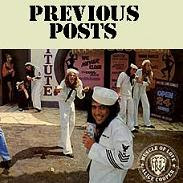Legendary Aviator Inducted Iinto The Navy's Hall Of Fame
By the 1950s, James. D. Ramage had survived attacks by Zeros and MiGs. But his superiors warned that a deadlier foe was aiming to destroy his career. It was Ramage's reputation. “I was becoming known as a throttle jock,” Ramage remembered. “I was told that I might never amount to anything in the Navy.” Pilots are trained to assess threats instantly, then act. At once, Ramage – call sign Jig Dog – knew what he had to do. He had to ignore those warnings. “I came to the Navy to fly,” he decided. “That's what I'm here for.” Good call. Ramage's long and distinguished career continued until his retirement in 1976 as a rear admiral. In four decades with the Navy, he commanded squadrons, an attack wing, a carrier air wing and the aircraft carrier Independence. His dress uniform glittered with the Navy Cross, the Distinguished Flying Cross and the Air Medal. At 92, he lives with his wife, Ginger, in an oceanfront condo beneath North Island's flight path. The view out the windows is spectacular. The walls look shipshape, too, full of photos, paintings and plaques testifying to a busy and accomplished life. In May, Ramage received another honor. At the National Naval Aviation Museum in Pensacola, Fla., he was inducted into the Hall of Honor.
James Ramage, at his Coronado condo, described a bombing mission using a model of the Douglas SBD Dauntless dive bomber that he flew in the South Pacific Some would say the honor was overdue. Ramage is “a living legend among airedales,” wrote Capt. Melvin Ray Schultz, a naval aviator-turned-chaplain. Schultz, who died in 2005, flew combat missions as an enlisted aircrewman during World War II. Although Ramage, a Naval Academy graduate, spent his entire naval career as an officer, he felt that the enlisted fliers never received their due. “We pilots probably got more medals than we deserved. The combat aircrew, though, probably got a limp handshake,” he said. Aboard the aircraft carrier Enterprise in World War II, the young officer was startled one day when the public address system announced the death of a popular pilot. No mention was made of the enlisted man who had also perished in the plane – not, that is, until Ramage tracked down the announcer and insisted he correct the oversight. “But that had a great impact on me,” Ramage said. “Riding backwards in the back of a dive bomber is not any great sport.” After his retirement, Ramage worked to establish the Enlisted Combat Aircrew Roll of Honor. He devoted years – and what Schultz described as “a generous sum of money” – to the cause. The small museum is now aboard the retired aircraft carrier Yorktown in Charleston, S.C. “I've loved doing that more than anything,” he said. Since boyhood, in fact, Ramage has had a passion for all things aeronautical. As a 13-year-old in Waterloo, Iowa, he attended a slide show presented by Richard Byrd, the aviator, explorer and admiral. “He wore his white service uniform, the gold wings – that was me.” This fascination was strong enough to trump other fierce emotions, including terror. He still remembers the day in 1943 when he spotted his first Zero. As the swift Japanese fighter closed with murderous intent, the American pilot fell in love. “I couldn't believe it. The performance was so good – it was fast, really a beautiful, beautiful airplane.”
James D. Ramage is shown in the 1950s aboard the aircraft carrier Oriskany. He retired in 1976 as a rear admiral. Time was running out for that Zero pilot's comrades in arms, though, as the U.S. Navy swept relentlessly across the Pacific. Ramage flew in 11 combat operations; off Saipan in 1944, he was cited for bombing a Japanese carrier “and leaving it in a sinking condition.” Ramage later served in the Korean and Vietnam wars; trained a generation of pilots, including future astronauts James Lovell, Wally Schirra and Alan Shepard; and delivered Smithsonian-sponsored lectures on World War II air operations. At home, though, the retired admiral doesn't dwell on his aerial prowess. Instead, he continually steers the conversation to a modest theme. Go on, ask how his career began: “I was lucky enough to be assigned to the Enterprise out of Annapolis in 1939.” Ask about his 92 years and counting: “I've had a very lucky life.” Ask about anything: “I've always been so lucky.” Wasn't there some talent involved? “I certainly hope so,” he said, laughing. But even the most skillful aviator can run into trouble. When men and machines travel at high speed through an unforgiving sky, even the luckiest tempt fate. One night in 1959, Ramage landed on the deck of the Oriskany. While talking to another officer, the pilot was approached by a young sailor. “Sir, did you just land aboard?” “Yeah.” “Do you ever get used to that?” “Son,” Jig Dog said, “it just scares the hell out of me.”






















<< Home